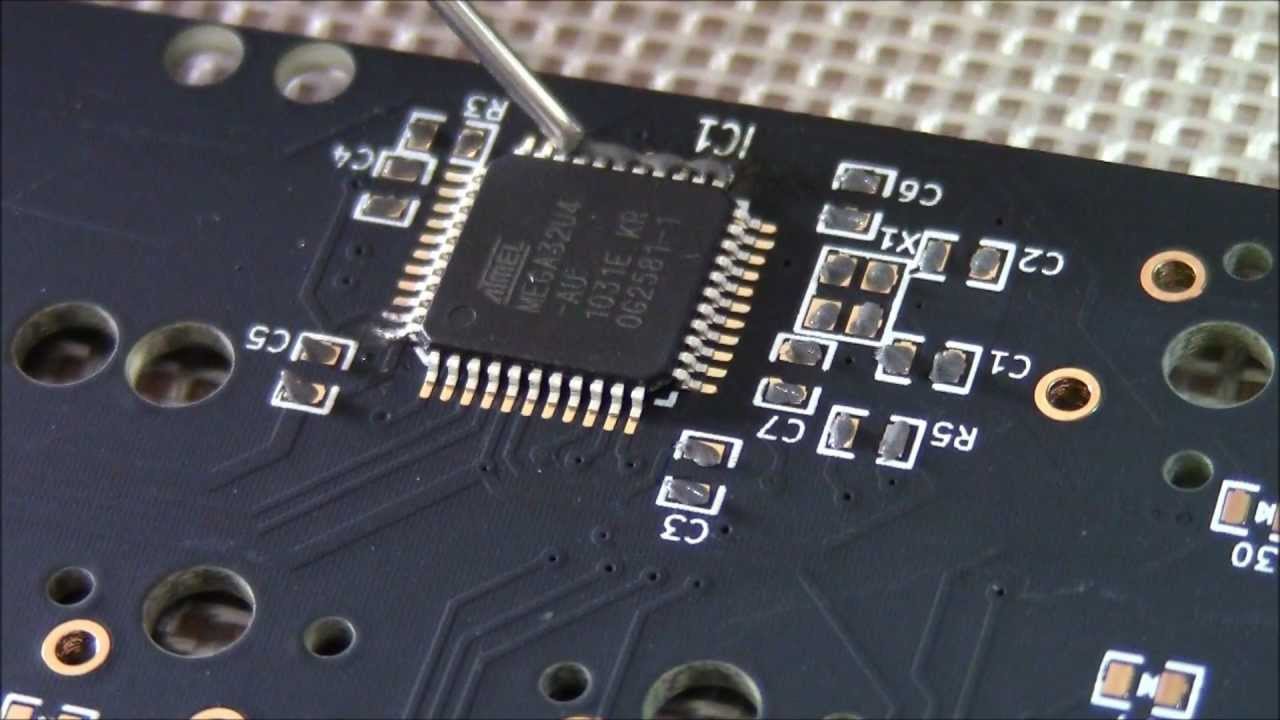hello guys,
i would like to know how can i build a based arduino in a pcb around an SMD ship for the smallest space possible to build a professional pcb circuit ?
Shpaget:
Read these:
http://www.hobbytronics.co.uk/arduino-atmega328-pinout
http://arduino.cc/en/main/standalone
Gammon Forum : Electronics : Microprocessors : How to make an Arduino-compatible minimal boardThat should get you started.
i know about the arduino uno thing, but i want an SMD based
so i do the same circuit but with the smd chip ?
Atmega328 is Atmega328, no matter what package it comes in. Stuff you'll learn while making it on a breadboard will be useful once you have your PCB.
All the components you need for the SMD variant are required in through-hole.
Shpaget:
Atmega328 is Atmega328, no matter what package it comes in. Stuff you'll learn while making it on a breadboard will be useful once you have your PCB.
All the components you need for the SMD variant are required in through-hole.
aha, what do you mean through-hole ?
The "regular", non-SMD stuff has pins that are meant to be placed on a PCB with holes in the arrangement matching the pin positions. Pins of such electronics parts go through the hole in the PCB. That's where name comes from.
Shpaget:
The "regular", non-SMD stuff has pins that are meant to be placed on a PCB with holes in the arrangement matching the pin positions. Pins of such electronics parts go through the hole in the PCB. That's where name comes from.
aha so you want to say that same components are required but for PCB means the small components ?
firashelou:
aha so you want to say that same components are required but for PCB means the small components ?
Yes, you can do it like that.
firashelou:
aha so you want to say that same components are required but for PCB means the small components ?
Hmmm.
Do you actually know what "SMD" and "PCB" mean?
Perhaps you should do some research on Google.
Seriously.
You can use "big" through hole components for PCB as well, the thing is that for learning and making practice circuits you should use through hole on breadboard. Once you have a working circuit there you can move on and design the PCB, using either through hole or SMD, whichever you want.
If you go straight to SMD PCB, you will more than likely make an error and your board will as you intended or at all.
Even experienced professional PCB designers make mistakes, so you should expect the possibility of making some as well. Starting with breadboard prototype, you reduce the risk and number of mistakes you are likely to make.
Paul__B:
Hmmm.Do you actually know what "SMD" and "PCB" mean?
Perhaps you should do some research on Google.
Seriously.
i do, the smd are the small components, you put solder on the PCB surface, melt it and you put the SMD component
Shpaget:
You can use "big" through hole components for PCB as well, the thing is that for learning and making practice circuits you should use through hole on breadboard. Once you have a working circuit there you can move on and design the PCB, using either through hole or SMD, whichever you want.
If you go straight to SMD PCB, you will more than likely make an error and your board will as you intended or at all.Even experienced professional PCB designers make mistakes, so you should expect the possibility of making some as well. Starting with breadboard prototype, you reduce the risk and number of mistakes you are likely to make.
thanks for info but yes i know the hole components can be used, it's what i usually use, now i learned the "hole through " word
i do, the smd are the small components,
There are various different sizes of SMD components like resistors and capacitors.
0603 and 0805 are two of the most used sizes that can be physically handled. You go to 0402 and it is just like dust and very difficult to hand place.
The smallest Arduino clone I have seen is the Beetle
Look at a promini for a USB-less design, or the Nano for USB-equipped design.
I am happy to see what I need here thank for all
There's the point - unless you are going in for really serious production you already have available very compact modules using SMD construction and containing all the components you need to implement the functions of the Arduino - the Pro Mini without the USB function, and the Nano with the USB function. It will be difficult to construct anything smaller, particularly so if you require the USB functionality. There are smaller modules available, but these are largely stripped of various support functions such as power regulators or crystals.
And these modules are very easy to use, they generally come without the "header" pins attached so you can wire your extra circuitry directly to them (and "sandwich" parts over the boards for compactness) or use the header pins to mount them on stripboard or protoboard to mount other components or modules.
aha ok, guys can anyone please tell me what are the tools' name used in this video ? what solder is he using and how is he soldering it ?
Solder paste, soldering iron (temperature controlled), hot air soldering station.
Paul__B:
Solder paste, soldering iron (temperature controlled), hot air soldering station.
aha ! so if i wanna buy these tools are they very expensive ?
what is the solder paste do exactly isn't like the solder ? conduct electricity ?
